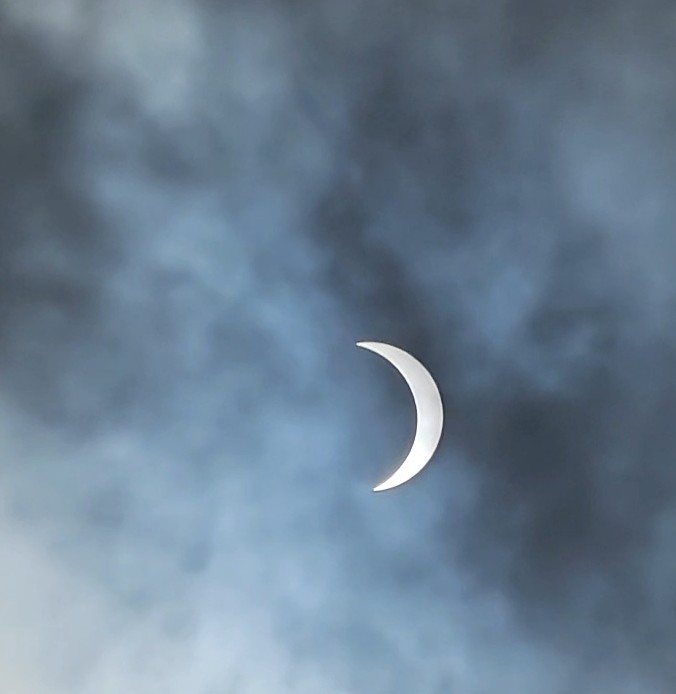Those art pieces are literally poison to a young aspiring artist’s mind. It condemns them to a life in poverty, chasing dreams of becoming high profile abstract-postmodernist-whatever artist selling shits in jars, instead of focusing on making what the world really needs the most:
spoiler
gay furry porn
You either die dignified and impoverished, unrecognized in your own lifetime, or you live long enough to afford a custom alpaca fursuit.
A fursuit of an alpaca, or made with alpaca fur? Or both?
an alpaca wool fursuit sounds like it would melt the wearer.
Well, I’ll let you know that big dragon mommy milkers are superior
Pollock is popular because of this exact thing. He “challenged” the idea of art as the Dada movement had done. You can absolutely hate it but like Warhol it made conversations and questions about process and astetics. By making a meme about it you have in fact thought about what art is and aesthetics you prefer. A Pollock painting made you do that.
People saying he do not select colors or use technique is just false. He would use a pulley system for large scale canvases and spread the colors quite purposefully. Remember this is the time of “happenings” like applying body paint and rolling on canvases, cutting up the canvas and applying newsprint, burning things, etc.
I don’t even like Pollock but not to recognize him in museums within a moment of abstract expression would be a disservice. I’ve had plenty of students say. “I could paint that!”. But there are two points they always misunderstand. 1. Pollock was an established painter who drastically changed styles. Many artists show that they can paint or draw in the traditional style but choose to push what is even art. Some people at this time said the “process” was art not the painting hanging in the museum. 2. Everyone who tries to replicate a Pollock typically just uses some random paints with some bushes and just sort of flings it around. If you actually look at a Pollock in person up close. Yes you can see unevenness is created from not having full control of the paint on the brush but thought seems to go into exactly where the paint will land so that you have even coverage or at angles with different brushes. They is motion in how the paint drips. I can say that many of them I’ve seen are very much not “random” as you would think it would be.
Again I don’t care for the work as there are plenty of other abstract expressions to choose from like Hans Hofmann, Helen Frankenthaler who used Pollock as an influence.
This definitely gave me a new perspective. Thank you. I disagree with some things and the finished product is what is seen by most and “does not do anything for me” / I don’t feel anything, which I value the most. You are more versed on the technical side of art than I am for sure. I hope people see this as a light hearted meme and nothing deeper, how I intended it.
Edit: Also, the fact that a vast amount of people dislike it, no matter how versed they are in art, still means something IMO, as on the subjective side everyone’s opinion is equally valid.
Absolutely. It’s funny for sure. Your preference which I share is totally valid as any art critics. One more thing I forgot is the scale of these. Seeing in a book is one thing but like the Raft of the Medusa or Mona Lisa (very tiny) scale produces a very different idea and reaction in person. People often don’t consider how things actually were/should be seen. Pollock could be considered a bit of a “troll” of the time I find it amazing he still gets a reaction good or bad. In a post post moden art world Warhol has just sort of been accepted as art across the board. Pollock, Rothko and Duchamp still making people question why they are in a museum.
I’m sorry, where are you getting your data for your assertion that “the vast majority of people dislike [Pollock’s art]”? Your own meme indicates that people with that opinion are in the minority and that half the people with that opinion wouldn’t even know what they’re talking about. Obviously the meme isn’t a real bell curve, but still.
I’ll be honest, it sounds like you made that up based on not much at all. If that were the case, I’m sure I’d have heard many others express a dislike for Pollock, which I don’t think I ever have, besides you.
If we’re sharing unpopular art opinions, though, I hate Zawadzki and Beksinski (really just dystopian surrealism in general, it tries a little too hard to be spooky/dark/edgy imo and usually has that overly polished digital art look to it). Reminds me of something I’d see on Deviantart or something.
Whoa! I’m so sad that digital deviant art copying Zawadzki and Beksinski painting styles sort of ruined it for you. It’s incredible that they are so good at painting it has a “digital art look”. I hate when saturation of a style diluits the original but I can’t blame them for wanting to make art like them. I remind myself that them being “spooky/dark” is the aftermath of war in Poland and time of unease.
This is the modernized version of Dunning-Kruger. When you think you’re on the right side of the curve, but you’re on the left side of the curve.
Some people at this time said the “process” was art not the painting hanging in the museum
To expand a bit on the idea that the process itself is as important, or more important, than the resulting work standing in isolation, there are a bunch of examples of people really enjoying the “behind the scenes” or “how it’s made” aspects of art.
I happen to love OK Go’s single-take music videos in large part because they are absurdly complex projects requiring precise planning and tight execution. And you can see that the resulting work (a music video) is aesthetically pleasing, and can simultaneously be impressed at the methods used in actually filming that one take, from their early low budget stuff like Here We Go Again, or stuff like the zero gravity Upside Down and Inside Out, or even this year’s releases with technological assistance from programmed phone screens or robot arms holding mirrors.
Another example I like is James Cook making paintings out of typed pages in a typewriter.
There’s a lot of stuff with sculpture and painting that have these aspects where the methods used to make it are inherently interesting, and explain some of the features in the art itself.
To expand a bit on the idea that the process itself is as important, or more important, than the resulting work standing in isolation
This leads to my take on photorealistic art: basically photography has made fully realistic drawn and painted art obsolete. Even “unreal” things that look real but aren’t based on actual places or things can be achieved by photoshopping pictures together in a fraction of the time it takes, to make something look even close to a photographic accuracy drawing or painting by hand. If you see a picture of photorealistic art somewhere you’ll just think it’s a photograph or photoshopped, unless someone explicitly tells you it’s painted. The visual representation of photorealistic art has stopped being meaningful as it used to be, and the works need the context of the hard labour to be appreciated as what they are.
As a disclaimer though, photography and digital editing can be art in themselves, I’m not making point about that. It’s just fascinating how the value of hand drawn photorealistic stuff has almost fully shifted from the visual representation of reality to the actual process of producing it
Some people at this time said the “process” was art not the painting hanging in the museum.
I would assume that most people who criticize modern forms of art are criticizing the painting hanging in the museum. The more someone likes modern art, the more likely they are to learn about the artist and the process. The less someone likes modern art, the less they’re going to learn about that, so the more the focus will just be on the painting itself.
By making a meme about it you have in fact thought about what art is and aesthetics you prefer. A Pollock painting made you do that.
That’s “Pollock the influencer”. Influencing has always been part of art, I’m sure. Would Dali’s paintings have been as influential if Dali hadn’t also been a moustache artist? Probably not. However, I think you invite chaos if you consider things other than the painting hanging in the museum.
Why? Because if “you thought about their art” is a major criterion, then Hitler is an important artist. Look how often people have made memes about Hitler and his art. If you go by how often the artist’s art is posted, Hitler’s probably a more important artist than Picasso.
First thanks to everyone engaging! Having a great time with some real cool people here.
|“However, I think you invite chaos if you consider things other than the painting hanging in the museum.”
Not true. A huge amount of art is the preservation of an artifact from something previous and not about the “thing” hanging on the wall. Also “conceptual art” is just that the art is the “concept” not result. Ice, kinetic sculptures, happenings, change over time. You can see different art at different points in time. They invite you to consider what it was before and after. Sand mandalas are created in art spaces and then destroyed. When is it “art”? When they pore the sand into shapes or sweep it up? The answer can be “all” because it happened and “none” because it doesn’t exist or even when I think it looks like art.
|“Why? Because if “you thought about their art” is a major criterion, then Hitler is an important artist. Look how often people have made memes about Hitler and his art. If you go by how often the artist’s art is posted, Hitler’s probably a more important artist than Picasso.”
Maybe I’m not explaining well here. Have you ever seen a movie you sort of disliked but you couldn’t stop thinking about it? It sort of continues to impact your thoughts, I’m talking a month later you are thinking about it and still debating if it was good or bad or keep remembering the way it made you feel. That is what I mean. Maybe that was the point of the movie/art. Haneke is my favorite filmaker who creates almost movies that “haunt” you. I would say Hilters paintings didn’t engaged us. They didn’t expand our understanding of art through his paintings. He is famous for being the fascist Nazi leader but his paintings are a result of his fame as a figure. Jim Carrey’s art will likely never be in famous museums, most likely never push or be part of an important art movement, etc. but It gets lots of press because a famous person is making paintings. I’m speaking more of the impact of the art not awareness it exists.
Dali would absolutely be famous as an artist. His brush work is comparable to that to the old masters. His ideas , compositions, colors are incredible. He was a figurehead in the surrealist movement. Maybe not the pop icon without the branding of the mustache and “look”. but that came later.
Sand mandalas are created in art spaces and then destroyed. When is it “art”?
When it’s done, before it’s destroyed.
Have you ever seen a movie you sort of disliked but you couldn’t stop thinking about it?
Yes, but sometimes that’s because it was so bad that they couldn’t get even basic things right. I don’t think you’d argue that an incompetently made movie is a work of art because people can’t stop thinking about it. Although, sometimes things can come full circle and something can be such a train wreck that “art” emerges from the public’s response to it, see for example The Room.
I’m talking a month later you are thinking about it and still debating if it was good or bad
No, I don’t have that experience. I’ve seen movies that I can acknowledge were well made that didn’t appeal to me. I’ve seen badly made movies that I still enjoyed. I’ve seen movies that other people thought were amazing that I thought were crap. But, I’m never conflicted about whether a movie was good or bad.
I would say Hilters paintings didn’t engaged us.
And I would say the same about Jackson Pollock and Barnett Newman.
They didn’t expand our understanding of art through his paintings.
And I would say the same about Jackson Pollock and Barnett Newman.
He is famous for being the fascist Nazi leader but his paintings are a result of his fame as a figure.
And I would say the same about Jackson Pollock. Would his paintings be as famous if he’d lived to 80 years old instead of dying tragically young? Would his splatter art be as famous if he hadn’t made a name for himself (i.e. achieved some degree of fame) doing traditional art first?
Imagine if an unknown 20 year old with no background at all in art had created the paintings that Pollock had created. Imagine she’d been painting her house and thought the paint drops on the ground looked interesting, so she put a canvas over the plastic and did some dripping intentionally. Would that art be hanging in a museum? Almost certainly not, because she wouldn’t have the fame, story or background necessary to get the art world to take her seriously.
As for Dali, I’m sure he’d be well known. I love his stuff. But, you can’t separate the art from the artist. Would his art be less famous if he just looked like a short, chubby peasant from Spain, and he’d lived a quiet life? I think it definitely would be less famous.
What I’ll acknowledge is that there are “artist’s arists”, artists whose work is considered very important and influential by other artists, but not by the general public. You’ll find that in all kinds of fields. There are standup comedians who have never been able to draw a big crowd, but who other standup comedians think are absolute geniuses. That’s a situation that’s pretty interesting because the whole point of standup comedy is to make people laugh. If a standup comedian can’t reliably do that, then are they actually a good standup, even if other comedians think of them as a genius and highly influential?
The other issue is how you can’t untie art from the reception of that art. Take “Voice of Fire”, which is hanging up in Canada’s National Art Gallery. Artists may think it was important or influential, but the general public thinks it’s absolute crap. But, the controversy of the gallery paying $1.8M for it made it incredibly famous. As a result of that fame, it is now valued at more than $40M. IMO the reason it is valued at $40M today is the result of it being selected for the art gallery, and the controversy around its selection. If there had been no controversy about its acquisition, it would probably be valued considerably lower today.
But, does any of that change the “paint on canvas” value of that art? I don’t think so. All of that is related to the circumstances related to the art: the fame of the artist, the circumstances around the creation of that art, the price other people have paid for it, any controversies around that, etc.
The point I’m making is that although you can’t separate the art from the artist, or from the circumstances surrounding the art, including its history, etc. You should still try to do that when evaluating it as “paint on canvas”. Talking about the buzz surrounding a piece of art opens the door to all kinds of things that are not relevant to the paint on the canvas. If you argue that a piece of art is important because people are talking about it, then that opens the door to saying that art by Hitler, Ringo Starr and Jim Carrey are important. And then you have to get into an impossible scenario where you dissect why it is that someone is famous, and how much of the fame of their art is the result of their own personal fame. While it may seem obvious with people like Ringo Starr that his art would be completely ignored if it weren’t for his fame, it’s much less obvious with someone like Dali or Andy Warhol, or some of the people who made huge money with NFTs.
What about Helen Frankenthaler and others doing “pouring” before Pollock, and that Pollock was a mediocre traditional painter, plus I guess the CIA money helped.
I understand the whole idea of transcending stuff, but just doing something “different” isn’t IMO obligatory noteworthy.
The Dada movement challenged not just standards but art itself, interesting and necessary, but is it art? One can argue.
The impressionists started it all, but then it spiraled out to just do something not have been done yet, which is good and important, but IMO it does absolutely not mean it’s some kind of new art form. But of course that’s just my opinion.
My favorite thing about art is that if you look at it and you hate it, that’s still a completely valid take
Art museums became way more fun once I realized that
I am going to MOMAs all over to laugh at the stupid shit some artists pull off. Laughed my ass off at the taped banana. I am not even interested in what the artist thinks or means. I am entertained, that is what I expect of art.
Like in London, there was this big-ass room dedicated to a giant chair and a giant table, you could walk under. Heated, in the middle of a freezing winter. Like, the homeless were freezing out on the streets, and here we are as a society, heating a room for a chair and a table nobody could use. Just take in the absurdity, and you have to laugh at this shit to compensate and stay sane.
This is very true for me. Same for a lot of history museums, which are full of historic arts and crafts.
Like, some native art is just old craft, not actually good art to me, but some ancient cultures had a wild perspective and the art matches.
I just like the way it looks.
That’s cool. Don’t let any douche like me talk you out of that. 🙂
The bell curve is in fact 3 dimensional and you took the upper 0.1% of the orthogonal axis to the one depicted.
It’s money laundering
Still better than AI art.
I don’t like AI slop. But this kind of “art” is not much better. This is human slop.
Low effort bullshit to impress art “connoisseurs” (people with money)
When the end goal is (in)fame and money, we can’t argue with the results
Indeed.
Not trying to be a dick, if you enjoy his art that’s great 👍
I was similar until I saw him actually painting. There is something about the process that makes me love it. It’s weird to me too that I feel that way.
https://www.youtube.com/watch?v=X3Uj_HAAvbk
https://www.youtube.com/watch?v=CrVE-WQBcYQ&list=RDCrVE-WQBcYQ&start_radio=1
Appreciation of art is always 100% subjective (except technique). So your opinion is just as valid.
Oh for sure, I believe everyone’s opinion is valid as well. I’m just surprised that seeing him paint made me appreciate the art more. That is interesting to me. It reminds me of monks making sand mandalas, like he was meditating. I doubt he was drunk since he has to paint systematically and mainly on one leg.
Sand mandala being made: https://www.youtube.com/watch?v=fCwLLo_9D-E
If he was an alcoholic, he would be “normal” at a certain blood alcohol level. At some point people drink only to avoid withdrawal, which can be lethal in the case of alcohol. I can absolutely see that the process of creating something influences how one perceives it.
He did say one thing that made me think a lot about art in general:
“technique is just a means of arriving at a statement” - Jackson Pollock
The process is the point
Pollock hits harder in person tbh.
Prints and photos don’t really work; it ends up looking flat and empty. But in person, there’s more “depth” in both a literal and figurative sense. You can see more of the intent put into the methodology.
Mind you, I agree with the idea that he’s over hyped. He wasn’t exactly breaking new ground, and there’s plenty of other artists that explored abstract painting with more satisfying and effective results.
But I don’t think it’s accurate to call it shit either. As much as people love to say it, no a kindergartener couldn’t do it. Even high schoolers have trouble making something that looks similar enough to carry the same visual effect. Some art students at a collegiate level can’t.
Turns out you do have to have some degree of development in your techniques at the very least to get the same results, no matter how much raw talent you have.
Now, don’t ask me if I really like his stuff. I mean, I’m going to say it anyway, but still. My take on his body of work is that he fully explored the “drip” technique way before he quit doing it, and likely could have stopped after the first one because the only real differences between them amount to nothing more than the difference between most hotel and doctors’ office wall hangings. You see one, you’ve seen them all.
Don’t get me wrong, I don’t doubt that he got something more than money out of the process. I make bland and basic art myself, and IDGAF about the results as much as the enjoyment of making. Every art student I’ve ever known gets super into the process of creating and that’s a wonderful thing; dissecting what they’re doing as they do it.
But that value isn’t something that carries on beyond the process itself.
Its paint splatters. Which the artist has no control over.
Only if it is deliberate can you claim it has depth. Otherwise it is nothing more than a happy accident that it looks to have depth.
Well, you absolutely have control over splatters once you understand the way they happen. A liquid at a given viscosity moving at a given speed will have predictable, but minutely variable, outcomes.
In other words, every raindrop hits in a predictable way, and the only reason you can’t predict exactly how the resulting splash will look is a lack of ability to make the same predictions on a molecular level. But, if you could see and hold in the human brain, the outcome is absolutely predictable even at that level; we just can’t pull it off without outside assistance.
Look at airbrushing. It’s tightly controlled spatter. You’re using air to make the drops so small that we can predict and control the outcome so that it can be used to give a range of end products. But if you get in really tight to what’s going on, it’s high speed splattering.
I would also disagree that a happy accident can’t have depth visually. But I think you likely misread how I was emphasizing, so it isn’t really useful to say more than that.
However, Judge for yourself if he was bullshiting about his degree of intent in his efforts. It isn’t like there aren’t other interviews and information about what he did, on both technical and analytical levels. Him saying he has intent doesn’t mean he’s speaking truth, nor would it being truth change whether or not one agrees with his intent, or how successful one feels he was in achieving it.
But he at least came up with an explanation of intent, and his movements when working are controlled enough to indicate he at least thought he was working with intent, and isn’t that the same thing as intent on a practical level?
Regardless of how people feel about Pollock’s work, there was art before expressionism and art after. He and others undeniably changed the conversation about art forever.
Say what you want about this meme, but it sure as shit sparked a debate.
Can’t tell which people hate more, the art, the artist, or the admirers of the work.
At least it’s not made by AI.
Tax dodges for the rich don’t need to look good, they just need hype.
Sure, but if I were to do that, I’d at least buy something nice.
Why pay more when banana taped to wall do?
Someone eat banan 😨
Fun fact: when you buy stuff like that you get a paper explaining how to remake the artwork, here how/what banana & tape and how to replace the old one.
Looked for this comment before saying the same thing. This is just what emerged at that time as a wonderfully convenient tax avoidance scheme, however organically. Art gatekeepers are tax dodgers’ useful idiots.
It may be aesthetic. It may be beautiful. But applauding while traitors converge upon some artist and their work is a mistake. They will always use this shit to rob society blind.
Luckily the time for highly centralized art opinion is somewhat over with the internet. It is much harder now to ‘force’ opinion to be that so-and-so is just divine and worth ten billion dollars for any art they create.
I think Pollock paintings are fine. I’ve seen his paintings in an art gallery at least once.
Compared to most other modern art in the same gallery, Pollock was actually visually pleasing to look at. He knew which colors work well together, which is uhm great.
i thought it was shit until i saw some of his paintings in person, and they’re awesome….
they suck when tiny and on a screen
I’d much rather the CIA spent their money on this.










